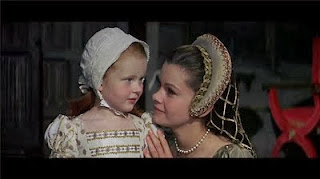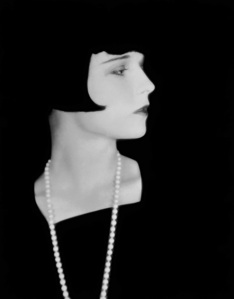Upon finishing Giles Tremlett's biography of Katherine of Aragon, I've come away with an even deeper respect for Henry VIII's first Queen.
In this day and age, there has been so much written on the six wives of Henry VIII, and many more that declare Anne Boleyn as the greatest of them all, while the others have been neglected. Indeed, Tremlett's biography is the first since the early seventies to focus solely on Henry's first Queen. And it proves long overdue. Tremlett gives us the portrait of a woman who was not merely a matronly wife who defied a king; she was a strong willed and highly intelligent woman who survived many hardships thrown at her by the people she was raised to submit to unquestionably.

Katherine of Aragon was the youngest child of Ferdinand of Aragon and Isabel of Castile, two of the most powerful monarchs of medieval Europe; not to mention unique for they both governed with equal authority - Isabel ruling Castile in her own right, while Ferdinand ruled over Aragon. Indeed, with a mother with such unprecedented power Katherine later came to believe that her own daughter was capable of such authority in her own right, even if Henry didn't agree.

In 1500 Katherine sailed to England to marry the heir to the throne, Arthur Tudor, only for him to die within months of their wedding. After this, Katherine became a pawn in the power play between Henry VII and her parents. She could not even trust her own ladies, including her indomitable Lady in waiting Elvira Manuel who manipulated Catherine in order to bring a union between Henry VII and Philip of Burgundy, husband of Katherine's sister Juana la Loca (Joan the mad).
In 1504 Isabel of Castile died. Her eldest surviving child, Juana, was now the Queen of Castile. However, Juana did not have the mental stability or strength of her mother and the rule of Castile became a battle of wills between her husband Phillip and her father, Ferdinand. And Katherine was a means to an end in securing the victor.
As Katherine's most trusted adviser, Elvira manipulated Katherine to urge Henry VII into an alliance with Phillip in order to gain Castile for himself. Once she learned the truth Katherine worked to ensure the interests of her father above anything else. Tremlett states that this event shaped a large part of Katherine's personality. She learned the hard way that you cannot trust those closest to you, a lesson that would come in useful in the future.
When Henry VII died, he was succeeded by his son as King Henry VIII, and Katherine finally became a Queen. By 1511 she and Henry were blessed with a baby boy, but he was dead within a month. This is a tragedy that would plague Katherine for the rest of her days.
In 1513 Henry went to war with France, leaving Katherine as regent in his absence. Although he gained small victories they would pale in comparison with Katherine's own triumph over the Scots. When Henry left for France, the French King turned to their ally James IV of Scotland who retaliated by attacking the English. Upon hearing of the Scots army approaching the borders Katherine didn't hesitate to gather troops and have them sent to face the Scottish King who perished on the battlefield. He left behind a 13 month old son, who became King James V, and his widow Margaret Tudor, Henry VIII's sister.
Upon this victory Katherine had the Scottish King's coat sent on to France to show Henry. She had proved herself a loyal and trustworthy regent for her husband. She even acted as an unofficial ambassador for her father, urging her husband to favour Spanish interests. During Henry's campaign with France, Ferdinand signed a secret treaty with the French King, and Catherine was forced to choose between her husband and her father. It was an easy choice, as her father had failed her time and time again and this time she had had enough.
In the meantime Katherine focused on conceiving the longed for son that she knew Henry desperately wanted. An all consuming desire that would push the once loving couple further away from each other and push Katherine closer to God.
God finally answered her prayers on 18th February 1516 when she delivered a healthy girl into the world. Despite the joy of a healthy baby, the fact that she was a girl did not bode well for the Tudor dynasty. Eventually Henry grew tired of Katherine and although they kept up appearances, he no longer sought her council either, preferring the advice of Cardinal Wolsey. Slowly, Katherine became isolated within the royal court, spied on by her own servants and with little joy except for her daughter Mary.

After 1525, everything changed. Katherine's marriage and her own personal history were called into question when Henry applied to the Pope for an annulment on the grounds that his marriage to Katherine had never been valid due to Katherine's previous marriage to Henry's brother Arthur. The argument was based around a passage from the Old Testament that declared it a sin to marry your brother's wife, and that 'he hath uncovered his brother's nakedness; they shall be childless.' Yet, Katherine stood firm. She declared her marriage to be true and lawful - a statement that she would stand by to her dying days.
Around the time of the divorce proceedings Henry had been courting the infamous Anne Boleyn who would be blamed by so many for what was to come. Yet, it would be unfair to blame Anne for Henry had already carried these doubts about his marriage before Anne ever entered the picture. But it is the age old patriarchal view that when a marriage breaks up it is the fault of the wife or the mistress, never the husband. Especially if he also happens to be the King. Anne may not have been the initial cause for Henry's annulment, but she certainly took advantage of the situation, likely pushed on by her father and uncle, both hungry for power of their own; as well as her own desire for power.
The one mistake all the players made however was that they underestimated their opponent. Katherine discovered Henry's plans, knew of his secret meetings and wrote to her nephew, the powerful Emperor Charles who inherited a mighty kingdom, including Aragon and Castile. Katherine made sure that all the major players knew what was happening in England; and even Henry was at a loss when Charles invaded Rome, taking the Pope prisoner, leaving him in limbo over his divorce.
Throughout the whole proceeding Katherine proved time and time again to be a better fighter than her husband. Even Anne Boleyn warned him not to argue with the queen for she was 'sure to have the upper hand'. Alas, she was right. Even when the divorce proceedings opened in Blackfriars Katherine managed to manipulate the situation in her favour, getting down on her knees, submitting to her husband like any dutiful wife and asking Henry that she be allowed to consult Rome, to which he agreed.
It must be remembered that Katherine fought not only for her right as Queen but also for her daughter's right as heir to the throne. Even forced separation couldn't stop Katherine and Mary from standing by each other.
Henry of course grew impatient waiting for Rome's verdict and eventually tore England away from Rome, creating the Church of England thus leaving the decision of his marriage in the hands of an English verdict. Katherine was banished from court, stripped of much of her surroundings, her jewels being given to Anne who wore them at her own coronation. In spite of these humiliations Katherine remained obstinate and stood her ground. She would willingly die for her cause.
Sadly, she did die on 7th January 1536, alone and destitute. Abandoned by her husband, deprived of her only child, and forgotten by the Emperor, Katherine died at Kimbolton Castle, after a long and serious illness. Yet, she remained constant in her argument that she was the true Queen of England.
Upon her death, she was buried at St. Peterborough Cathedral. On the day she was buried Anne Boleyn miscarried for what was believed a second time. Mary was kept a prisoner, forced to be a servant waiting on Anne Boleyn's daughter, Elizabeth. Within five months of Katherine's death Anne Boleyn was sent to the Scaffold and executed on Tower Green.
After so many long year of fighting, both women in the end lost their lives in vain. Neither produced the male heir Henry desired, but they both left behind two strong willed daughters who would both become queen in their own right.
Katherine of Aragon herself has been cast into the mold of a long suffering wife rejected by her husband. Yet, this is only one aspect of a fascinating and complex woman who was a born fighter enduring more hardships than most and never crumbled under the pressure. Even when faced with the prospect of death she stuck by her beliefs, proving a more challenging adversary to the King and his council than any army ever could. Even her enemies couldn't doubt her strength, Thomas Cromwell declaring 'but not for her sex, she would have surpassed all the heroes of history.'















.jpg)



